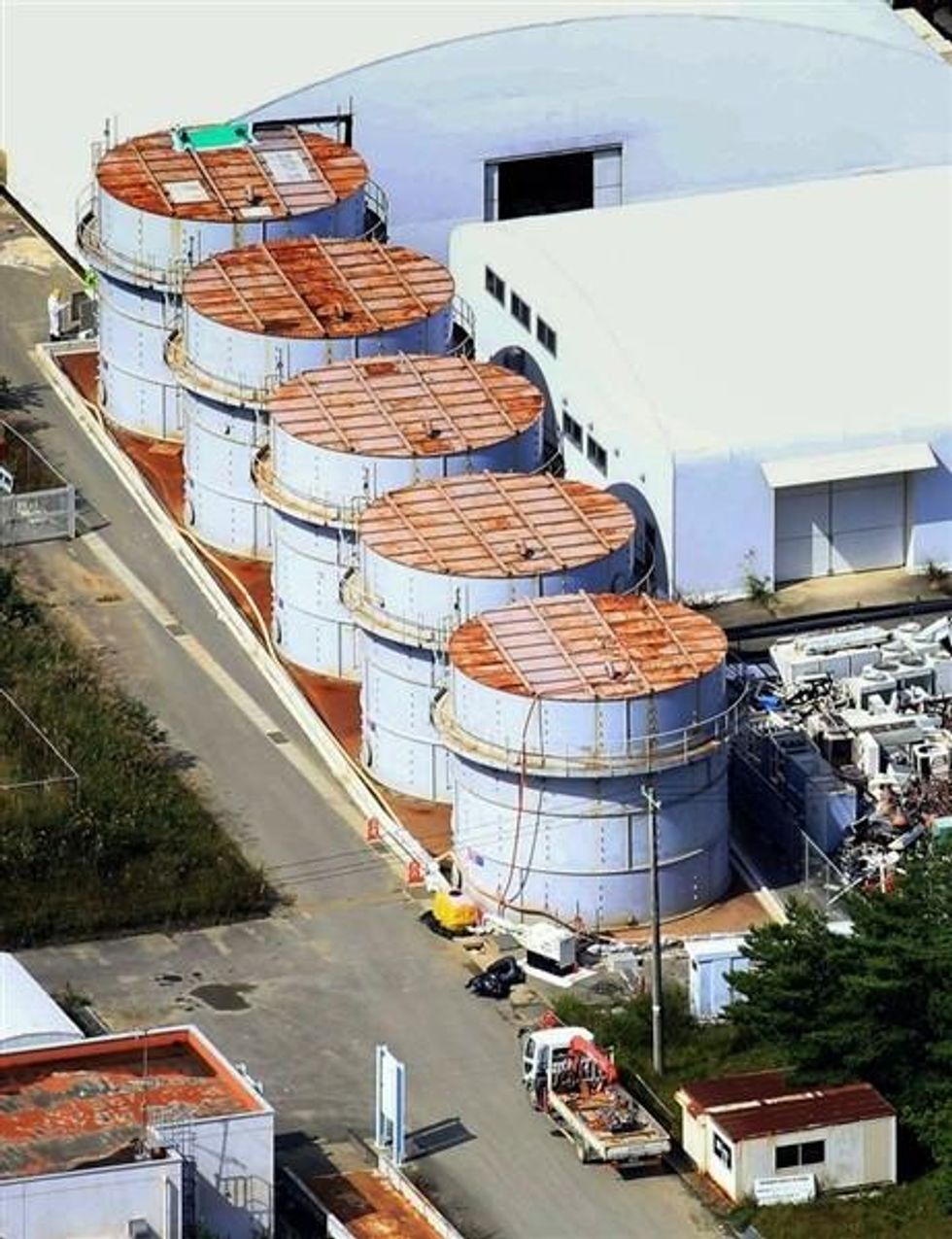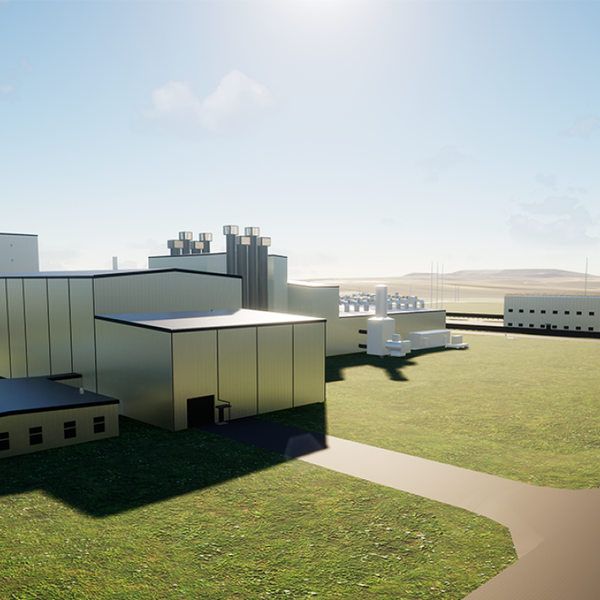Radiation Soars 6,700 Times Legal Limit as Fukushima Disasters Continue Unabated
'Clean-up' a litany of failures: near daily leaks, escalating danger, TEPCO and government cover-ups
TEPCO admitted Thursday that yet another spill at the crisis-hit Fukushima nuclear plant has released water 6,700 times more radioactive than the legal limit, adding to the near daily news of fresh leaks and climbing radiation pointing towards systemic failure to mitigate or contain the worst nuclear crisis since Chernobyl.

At least 430 liters of contaminated water spilled Thursday when workers overfilled a tank while transferring water without using a gauge. TEPCO revealed that the water that escaped had readings as high as 200,000 becquerels per liter, well above the legal limit of 30 becquerels.
Plant workers resorted to using sandbags in an attempt to absorb the leak, but TEPCO admits that by now, the radioactive water may have reached the Pacific Ocean.
This was just the latest in a series of near daily mishaps that, when added up, paint a picture of ongoing structural failure to contain a nuclear disaster that has only grown since a tsunami sparked a reactor-meltdown two and a half years ago.
While it is nearly impossible to paint a complete picture of the Fukushima emergency, given efforts on the part of TEPCO, the nuclear industry, and the Japanese government to cover it up, as well as the sheer scope of the crisis, Common Dreams has reported a series of key developments that occurred in September alone:
- Tanks are leaking and spilling on a near-daily basis, releasing radioactive water into the groundwater and sea. Even a 'radiation barrier' fence surrounding the tanks burst a hole. There is no short-term strategy for containing the ever-growing amounts of radioactive water contaminated by efforts to cool the melted reactors.
- The destroyed plant is extremely vulnerable to weather fluctuations, with storms and heavy rains resulting in the further release of toxic water. Facing the threat of Typhoon Man-Yi in mid-September, TEPCO released an unknown quantity of radioactive water into the ocean, in a bid to fend off further disaster, the company claims. As recently as Tuesday, a heavy rainstorm resulted in the leakage of at least 4 tons of toxic water.
- In early September, TEPCO admitted it had detected leaked water with radiation at levels high enough to kill a person within 4 hours of exposure. To date, it is not known what the short or long-term health effects will be for the thousands of clean-up workers at the plant.
- A rare admission from TEPCO senior official Kazuhiko Yamashita that the "situation is not under control" was quickly covered up by other company officials and the Japanese government, as Prime Minister Shinzo Abe scrambles to convince the International Olympic Committee that the problem is manageable.
The Japanese government announced in early September it will invest $500 million to build a giant 'wall of ice' surrounding the plant. Yet, experts it will take at least 2 years to complete, and there is no evidence it will mitigate the crisis.
- Despite the growing emergency, TEPCO is pushing to re-activate the world's largest nuclear power plant, the Kashiwazaki-Kariwa facility, located approximately 300 kilometers northwest of Tokyo.
_____________________
An Urgent Message From Our Co-Founder
Dear Common Dreams reader, The U.S. is on a fast track to authoritarianism like nothing I've ever seen. Meanwhile, corporate news outlets are utterly capitulating to Trump, twisting their coverage to avoid drawing his ire while lining up to stuff cash in his pockets. That's why I believe that Common Dreams is doing the best and most consequential reporting that we've ever done. Our small but mighty team is a progressive reporting powerhouse, covering the news every day that the corporate media never will. Our mission has always been simple: To inform. To inspire. And to ignite change for the common good. Now here's the key piece that I want all our readers to understand: None of this would be possible without your financial support. That's not just some fundraising cliche. It's the absolute and literal truth. We don't accept corporate advertising and never will. We don't have a paywall because we don't think people should be blocked from critical news based on their ability to pay. Everything we do is funded by the donations of readers like you. Will you donate now to help power the nonprofit, independent reporting of Common Dreams? Thank you for being a vital member of our community. Together, we can keep independent journalism alive when it’s needed most. - Craig Brown, Co-founder |
TEPCO admitted Thursday that yet another spill at the crisis-hit Fukushima nuclear plant has released water 6,700 times more radioactive than the legal limit, adding to the near daily news of fresh leaks and climbing radiation pointing towards systemic failure to mitigate or contain the worst nuclear crisis since Chernobyl.

At least 430 liters of contaminated water spilled Thursday when workers overfilled a tank while transferring water without using a gauge. TEPCO revealed that the water that escaped had readings as high as 200,000 becquerels per liter, well above the legal limit of 30 becquerels.
Plant workers resorted to using sandbags in an attempt to absorb the leak, but TEPCO admits that by now, the radioactive water may have reached the Pacific Ocean.
This was just the latest in a series of near daily mishaps that, when added up, paint a picture of ongoing structural failure to contain a nuclear disaster that has only grown since a tsunami sparked a reactor-meltdown two and a half years ago.
While it is nearly impossible to paint a complete picture of the Fukushima emergency, given efforts on the part of TEPCO, the nuclear industry, and the Japanese government to cover it up, as well as the sheer scope of the crisis, Common Dreams has reported a series of key developments that occurred in September alone:
- Tanks are leaking and spilling on a near-daily basis, releasing radioactive water into the groundwater and sea. Even a 'radiation barrier' fence surrounding the tanks burst a hole. There is no short-term strategy for containing the ever-growing amounts of radioactive water contaminated by efforts to cool the melted reactors.
- The destroyed plant is extremely vulnerable to weather fluctuations, with storms and heavy rains resulting in the further release of toxic water. Facing the threat of Typhoon Man-Yi in mid-September, TEPCO released an unknown quantity of radioactive water into the ocean, in a bid to fend off further disaster, the company claims. As recently as Tuesday, a heavy rainstorm resulted in the leakage of at least 4 tons of toxic water.
- In early September, TEPCO admitted it had detected leaked water with radiation at levels high enough to kill a person within 4 hours of exposure. To date, it is not known what the short or long-term health effects will be for the thousands of clean-up workers at the plant.
- A rare admission from TEPCO senior official Kazuhiko Yamashita that the "situation is not under control" was quickly covered up by other company officials and the Japanese government, as Prime Minister Shinzo Abe scrambles to convince the International Olympic Committee that the problem is manageable.
The Japanese government announced in early September it will invest $500 million to build a giant 'wall of ice' surrounding the plant. Yet, experts it will take at least 2 years to complete, and there is no evidence it will mitigate the crisis.
- Despite the growing emergency, TEPCO is pushing to re-activate the world's largest nuclear power plant, the Kashiwazaki-Kariwa facility, located approximately 300 kilometers northwest of Tokyo.
_____________________
TEPCO admitted Thursday that yet another spill at the crisis-hit Fukushima nuclear plant has released water 6,700 times more radioactive than the legal limit, adding to the near daily news of fresh leaks and climbing radiation pointing towards systemic failure to mitigate or contain the worst nuclear crisis since Chernobyl.

At least 430 liters of contaminated water spilled Thursday when workers overfilled a tank while transferring water without using a gauge. TEPCO revealed that the water that escaped had readings as high as 200,000 becquerels per liter, well above the legal limit of 30 becquerels.
Plant workers resorted to using sandbags in an attempt to absorb the leak, but TEPCO admits that by now, the radioactive water may have reached the Pacific Ocean.
This was just the latest in a series of near daily mishaps that, when added up, paint a picture of ongoing structural failure to contain a nuclear disaster that has only grown since a tsunami sparked a reactor-meltdown two and a half years ago.
While it is nearly impossible to paint a complete picture of the Fukushima emergency, given efforts on the part of TEPCO, the nuclear industry, and the Japanese government to cover it up, as well as the sheer scope of the crisis, Common Dreams has reported a series of key developments that occurred in September alone:
- Tanks are leaking and spilling on a near-daily basis, releasing radioactive water into the groundwater and sea. Even a 'radiation barrier' fence surrounding the tanks burst a hole. There is no short-term strategy for containing the ever-growing amounts of radioactive water contaminated by efforts to cool the melted reactors.
- The destroyed plant is extremely vulnerable to weather fluctuations, with storms and heavy rains resulting in the further release of toxic water. Facing the threat of Typhoon Man-Yi in mid-September, TEPCO released an unknown quantity of radioactive water into the ocean, in a bid to fend off further disaster, the company claims. As recently as Tuesday, a heavy rainstorm resulted in the leakage of at least 4 tons of toxic water.
- In early September, TEPCO admitted it had detected leaked water with radiation at levels high enough to kill a person within 4 hours of exposure. To date, it is not known what the short or long-term health effects will be for the thousands of clean-up workers at the plant.
- A rare admission from TEPCO senior official Kazuhiko Yamashita that the "situation is not under control" was quickly covered up by other company officials and the Japanese government, as Prime Minister Shinzo Abe scrambles to convince the International Olympic Committee that the problem is manageable.
The Japanese government announced in early September it will invest $500 million to build a giant 'wall of ice' surrounding the plant. Yet, experts it will take at least 2 years to complete, and there is no evidence it will mitigate the crisis.
- Despite the growing emergency, TEPCO is pushing to re-activate the world's largest nuclear power plant, the Kashiwazaki-Kariwa facility, located approximately 300 kilometers northwest of Tokyo.
_____________________

